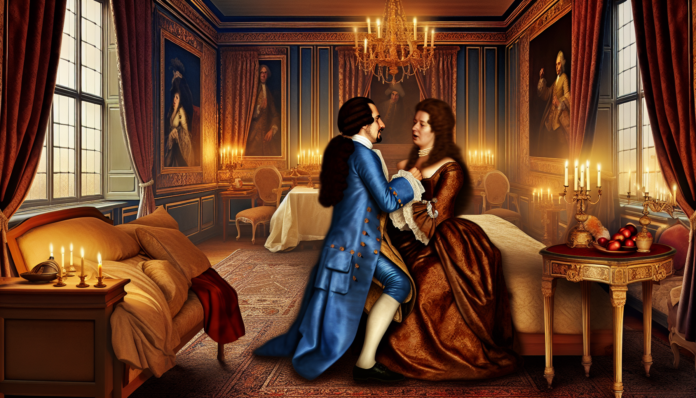Introduction
The tale of Anne Boleyn, the second wife of King Henry VIII of England, is a defining scandal that reverberated throughout history. Set in the early 16th century, this story exemplifies the fatal consequences of royal love affairs amidst a backdrop of strict societal norms and religious upheaval. Boleyn’s ambitious rise in the Tudor court and her highly publicized downfall capture both the intrigue of forbidden love and the perilous stakes of courtly politics.
During this time, the prevailing moral attitudes were dictated by deeply entrenched religious beliefs. Romance was often secondary to dynastic alliances and procreation, and adulterous affairs were met with varying degrees of reproach depending on the status of those involved. In a world where a woman’s virtue was her currency, the arc of Boleyn’s life—marked by passion, ambition, and tragedy—was wrought with danger.
The Scandal
Anne Boleyn’s affair with Henry VIII began as a courtly obsession that would incite one of history’s most notorious scandals. Despite being married to Catherine of Aragon, Henry’s fixation on Anne led him to seek an annulment from the Catholic Church—a request that would ignite the English Reformation. Boleyn’s refusal to become Henry’s mistress and her insistence on marriage only intensified the lustful power play between the two.
Their relationship took a dramatic turn as Anne became pregnant multiple times, increasing the urgency of Henry’s quest for an heir. However, when a male child was born but died shortly after birth, the court buzzed with rumors of betrayal and scandal. With mounting political pressure and public scrutiny, impotence gripped the royal court.
In 1536, the affair spiraled into chaos. Elizabeth Boleyn was arrested on charges of adultery, treason, and witchcraft—severe allegations meant to appease a desperate king seeking to unseat his past and solidify his future. It is said that she uttered the haunting words, “I have done nothing,” just before her execution on May 19, 1536, a bitter end for a woman who once danced in the court’s spotlight.
Key events included the sham trial orchestrated by those wishing to curry favor with Henry. English historian David Starkey emphasized that her downfall was fueled not only by scandal but also by the power struggles of men who felt threatened by her influence. “Anne was not merely Henry’s mistress; she was a wife in all but name,” he notes in his book Six Wives: The Queens of Henry VIII.
Moral and Cultural Analysis
Anne Boleyn’s trial and execution left an indelible mark on Tudor society. The immediate response was shock and outrage among the populace who saw her as a victim of royal whimsy. Many saw her execution as a necessary consequence of her ambition to ascend as queen, while others viewed it as a farce of justice. Religious leaders, keen to reinforce the king’s authority, publicly denounced Anne, dubbing her a witch who would lead the kingdom to ruin.
Fast forward to today, and reactions to such a scandal would vastly differ. Public sentiment might now favor Anne as a symbol of female empowerment—an ambitious woman thrust into the perilous machinations of male-dominated power structures. Contemporary audiences would likely view her plight through a feminist lens, interpreting her story as one of a victim of toxic patriarchy rather than as a manipulative queen.
Her legacy evokes questions about how society views scandalous affairs today, especially given the evolution of moral values and the prevalence of social media. In an era where personal relationships are frequently scrutinized, one can only imagine how the past would be transformed—perhaps with the aid of viral hashtags and commentary from online pundits dissecting every moment of court life.
Through the lens of time, the Anne Boleyn scandal reveals the eternal complexities of love and power, serving as a timeless reminder of the deadly consequences that can emerge from the intertwining of personal desire and imperial duty.

